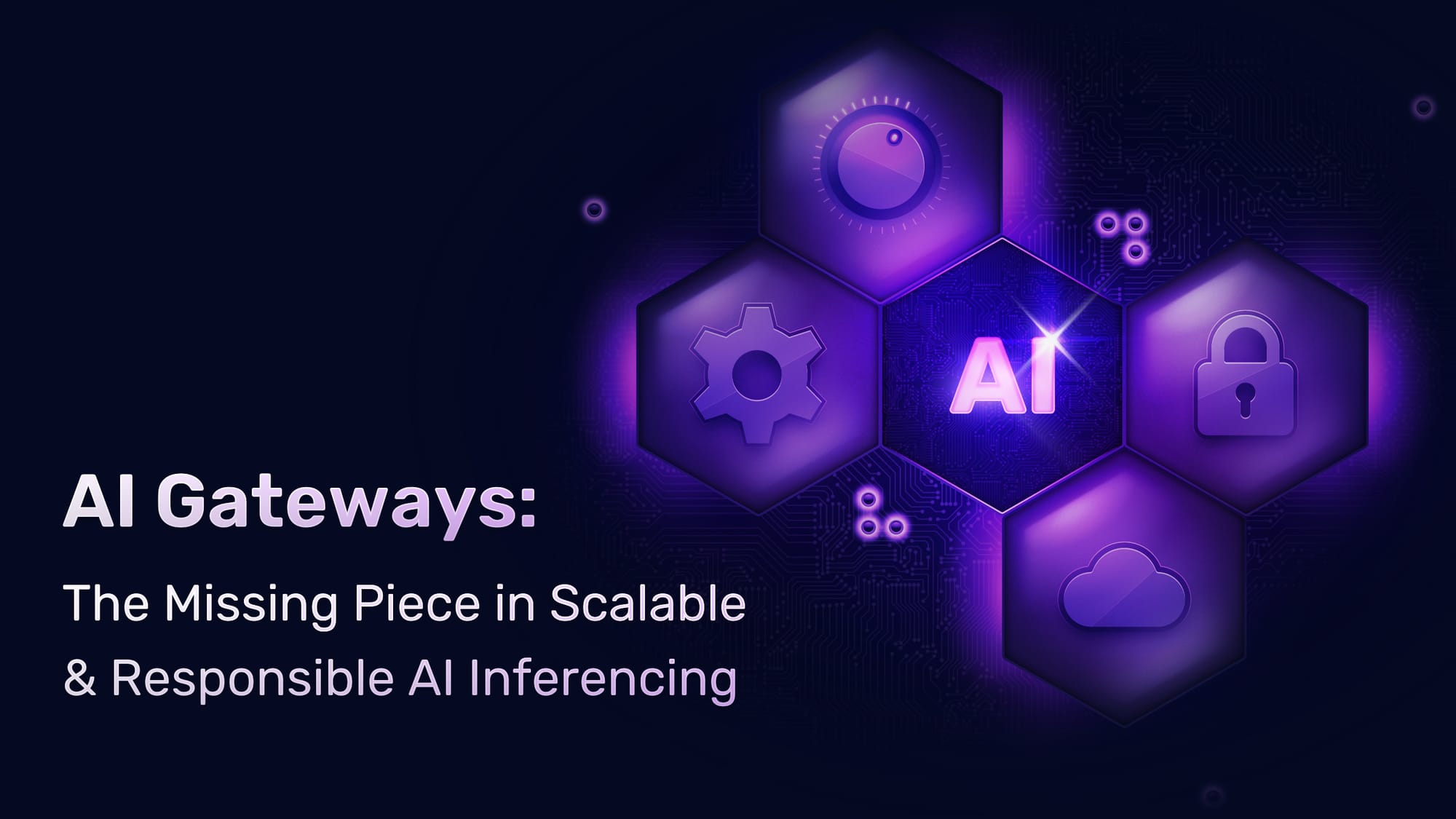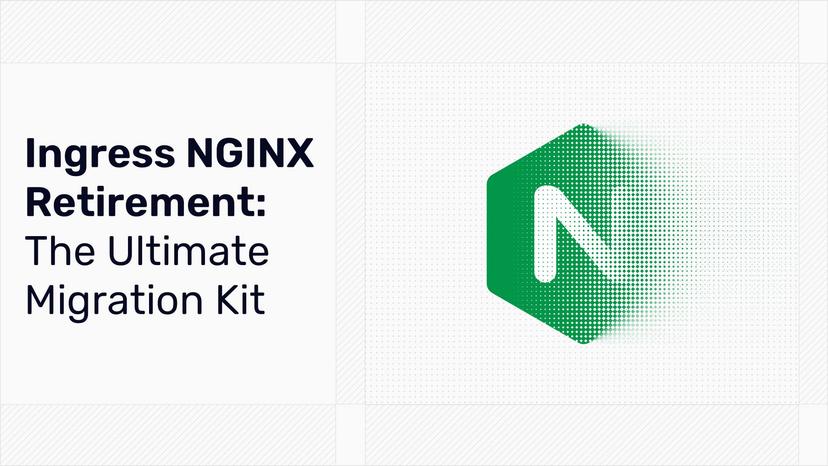AI Gateways: The Missing Piece in Scalable & Responsible AI Inferencing

As AI solutions evolve from experimental prototypes to enterprise-critical deployments, organizations face mounting challenges in scalability, performance, and responsible delivery. While standard AI gateways offer essential routing, load balancing, and API management, truly scalable and responsible AI inference demands two advanced enhancements: semantic caching—intelligently storing and reusing responses for similar prompts—and content guard that filters data shared with AI models as well as AI-generated content against safety and compliance standards.
Our exploration builds upon foundational gateway functionality to address the unique challenges of enterprise AI deployment, providing organizations with comprehensive solutions for both performance optimization and responsible content delivery—deployable anywhere from centralized data centers to global edge locations.
Why AI Gateways Form Essential Infrastructure
Organizations deploying AI at scale recognize the value of AI gateways as a unified infrastructure layer managing inference requests. Core gateways provide:
- Intelligent Routing: Directing requests to appropriate models and endpoints
- Load Balancing: Distributing traffic efficiently across infrastructure
- Request Management: Handling timeouts, retries, and concurrency control
- Observability: Monitoring performance and operational health
- API Standardization: Ensuring consistent interfaces across models
- Governance Controls: Enforcing organizational policies, access controls, and compliance requirements consistently across all AI interactions
While addressing fundamental challenges of infrastructure fragmentation and API inconsistency, AI deployments that scale to mission-critical status create additional challenges requiring specialized gateway enhancements: the computational overhead of redundant inference and the need for consistent content moderation.
An AI strategy remains incomplete without a robust gateway. Organizations lacking this critical infrastructure component build on fundamentally unstable foundations. Yet even with basic gateway functionality, enterprises still face significant challenges with performance economics and responsible scaling.
Semantic Caching: Unlocking Inference Scalability
Computational costs quickly become a limiting factor when AI systems move from experimentation to production. Traditional horizontal scaling proves economically unsustainable for AI inference, particularly for large language models with significant computational requirements.
Semantic caching emerges as the critical solution to scalability challenges. Unlike traditional caching requiring exact matches, semantic caching leverages advanced embedding techniques to identify the underlying meaning of queries, enabling reuse of previously computed results for semantically similar requests. Semantic caching dramatically transforms the economics of AI deployment:
- Reduced Computational Redundancy: Identifying semantic similarity avoids repeating expensive computations for equivalent requests
- Dramatic Latency Improvements: Cached responses resolve in milliseconds rather than seconds
- Cost-Effective Scaling: Resources focus on novel prompts while common patterns leverage cached results
Application in Financial Services
In financial services, semantic caching delivers exceptional value for customer-facing applications like chatbots and advisory tools. When implemented within AI gateways, organizations can expect:
- Significant reduction in inference costs through intelligent response reuse
- Response times improving from seconds to milliseconds
- Increased capacity to handle peak loads without proportional infrastructure scaling
- Consistent performance during high-traffic events like product launches or market volatility
The impact multiplies in distributed edge deployments, allowing organizations to efficiently scale inference capacity without additional hardware costs.
Content Guard: Foundation for Responsible AI Delivery
While performance challenges merely impede AI adoption, governance concerns can terminate projects entirely. The need for governance becomes especially critical when organizations deploy generative AI in customer-facing and high-stakes environments where inappropriate handling of data or outputs creates significant reputational or compliance risks.
Content guard addresses governance concerns by establishing a sophisticated safety layer within AI gateways that protects sensitive information shared with models and evaluates generated content to ensure compliance with ethical guidelines, industry standards, and regulatory requirements. This bidirectional approach safeguards the entire AI interaction flow, from inputs to outputs, creating a robust governance framework for responsible AI deployment.
For organizations with distributed inferencing operations, content guard delivers consistent policy enforcement across every deployment location while adapting to local requirements when necessary.
Application in Healthcare
In healthcare environments, content guard provides critical safeguards for both clinical and patient-facing AI applications. When implemented within AI gateways, healthcare organizations can:
- Enforce HIPAA compliance through automated PII detection and redaction
- Apply specialized medical safety filters to prevent potentially harmful recommendations
- Maintain distinct policy sets for different user interfaces (clinician vs. patient)
- Provide comprehensive audit trails documenting all content validations
- Reduce manual compliance reviews, accelerating application deployment while improving safety
By providing consistent, documentable enforcement of organizational policies regardless of where inference occurs, content guard transforms AI from a compliance risk into a compliance-enhancing asset for enterprises in highly regulated sectors.
Deployment Flexibility: From Core to Edge
AI gateways represent a logically centralized control plane that excels across diverse deployment scenarios. The lightweight, high-performance architecture enables organizations to maintain consistent policies, interfaces, and behaviors regardless of where AI inference occurs—from centralized data centers to thousands of edge locations.
Deployment flexibility becomes increasingly valuable as AI inference requirements diversify. Organizations now deploy AI gateways to:
- Optimize centralized data center operations for cost-efficiency at scale
- Support hybrid architectures combining on-premises and cloud resources
- Expand AI services to edge locations for reduced latency and data sovereignty
- Enable consistent management across heterogeneous environments
Managing these varied deployments demands a code-first approach. As highlighted in our previous blog on a holistic API architecture, the complexity of distributed AI infrastructure makes traditional manual management fundamentally unsustainable.
The code-first operating model transforms AI infrastructure deployment and management through:
- Infrastructure as Code: Gateway configurations, routing rules, and policies defined in version-controlled files
- Declarative Management: Explicit definition of desired states, eliminating configuration drift
- Automated Consistency: Automatic propagation of changes across distributed instances
- GitOps Workflows: Changes reviewed, tested, and deployed through established pipelines
- Audit and Compliance: Complete history of infrastructure changes and policy updates
For AI gateways operating at the edge, this approach must accommodate additional requirements:
- Lightweight Deployment: Efficient operation in resource-constrained edge environments
- Stateful Operations: Maintaining critical functions like semantic caching with minimal overhead
- Consistent Policies: Enforcing global standards with local adaptations where required
- Resilient Operations: Continuing to function during network disruptions
The code-first model maintains consistency across this distributed edge environment while adapting quickly to evolving requirements.
Integrated Gateway Solutions: Enhancing Performance and Compliance Everywhere
The full potential of AI gateways emerges when semantic caching and content guard operate together within a unified framework managed through code. This integration creates an optimized workflow regardless of deployment location:
Optimized AI Inference Workflow Anywhere:
- Request Processing: Incoming queries reach the gateway, whether in centralized data centers or edge locations
- Intelligent Cache Utilization: Gateway evaluates semantic similarity against contextually appropriate cached queries
- Efficient Response: For matches, retrieve cached responses and perform rapid content guard validation
- Optimized Inferencing: For novel queries, perform inference on appropriately sized models locally or route as needed
- Continuous Learning: Cache validated responses for future similar queries in that environment
Organizations can implement these AI functions across their entire infrastructure ecosystem—from massive centralized clusters to hundreds of distributed locations—creating a unified system that enables consistent management while maintaining operational flexibility.
The result is an integrated system delivering AI that is simultaneously faster, more cost-effective, more reliable, and demonstrably safer—regardless of where it operates in your infrastructure.
Conclusion: Building Future-Proof AI Infrastructure
Organizations that thrive in AI's rapid evolution won't necessarily possess the most advanced models, but rather the most thoughtful infrastructure to deploy them effectively and responsibly—wherever inferencing needs to occur.
AI gateways equipped with semantic caching and content guard, managed through a code-first approach, provide everything enterprises need to scale AI responsibly across any environment. The combined solution ensures high performance, reduced costs, streamlined workflows, and robust compliance—whether deployed in centralized data centers, distributed edge locations, or hybrid architectures spanning both.
Getting Started with Advanced AI Gateway Implementation
Ready to enhance your AI infrastructure? Here are specific next steps:
- Assessment: Request our complimentary AI Gateway Readiness Assessment to identify your organization's specific needs
- Pilot Implementation: Start with a focused pilot in a high-value use case to demonstrate ROI
- Solution Consultation: Schedule a session with our technical team to discuss integration with your existing infrastructure
- Strategic Roadmap: Develop a phased implementation plan tailored to your business priorities
Explore our comprehensive AI Gateway solution or contact our solution team to discuss how semantic caching and content guard can transform your enterprise AI deployment across your entire infrastructure.
Related Articles
In This Article
- Why AI Gateways Form Essential Infrastructure
- Semantic Caching: Unlocking Inference Scalability
- Content Guard: Foundation for Responsible AI Delivery
- Deployment Flexibility: From Core to Edge
- Integrated Gateway Solutions: Enhancing Performance and Compliance Everywhere
- Conclusion: Building Future-Proof AI Infrastructure
- Getting Started with Advanced AI Gateway Implementation
- Related Articles



